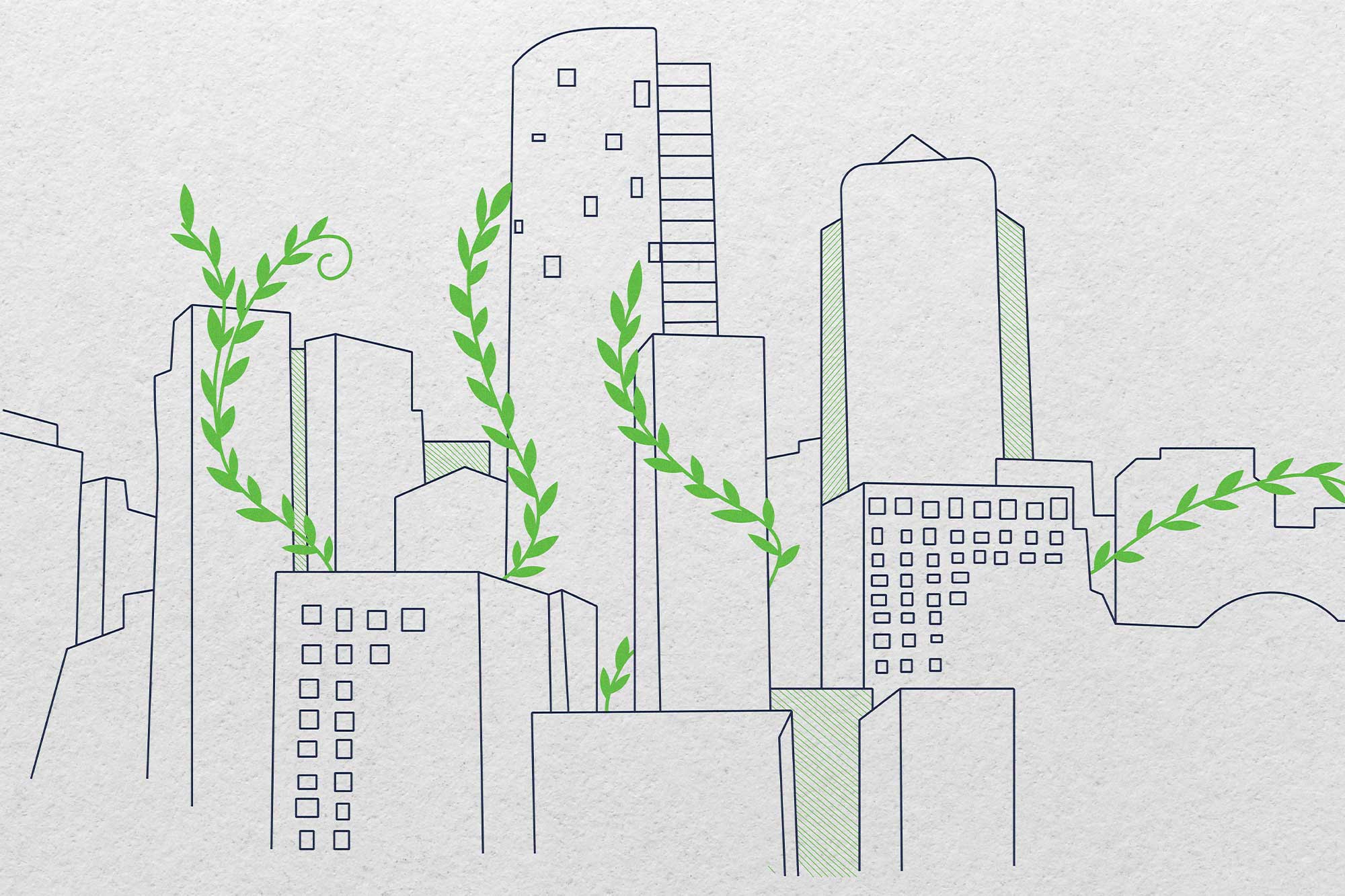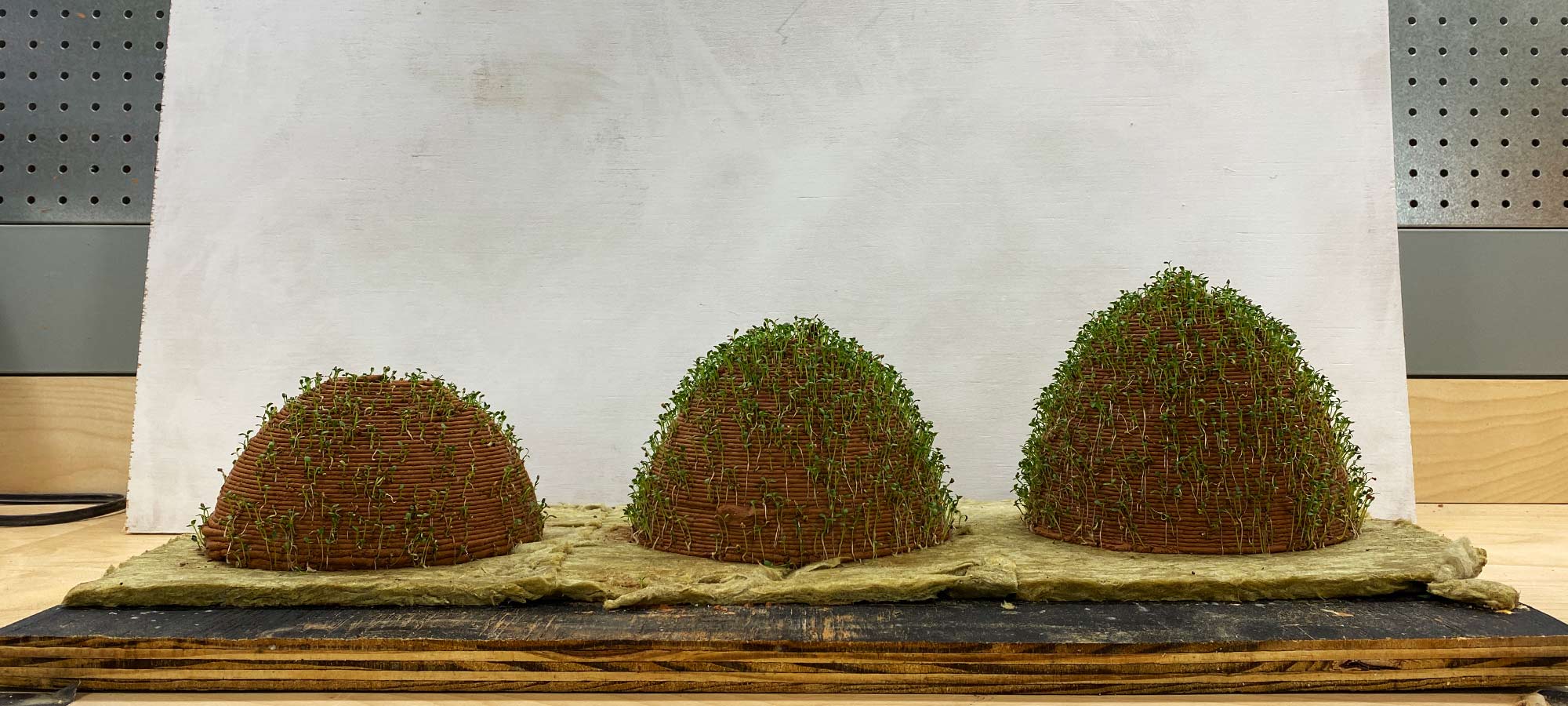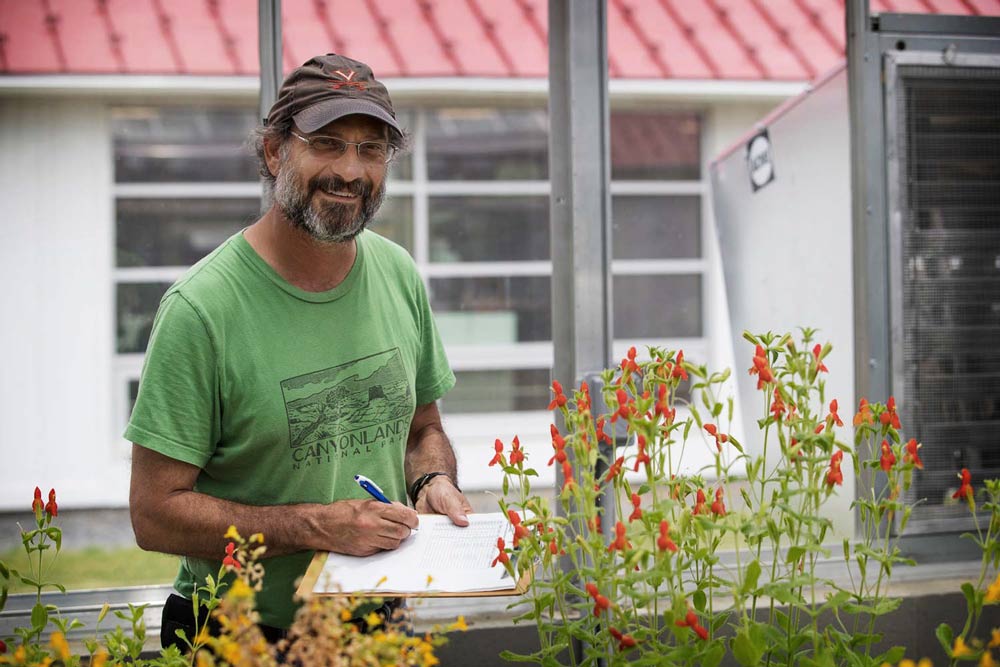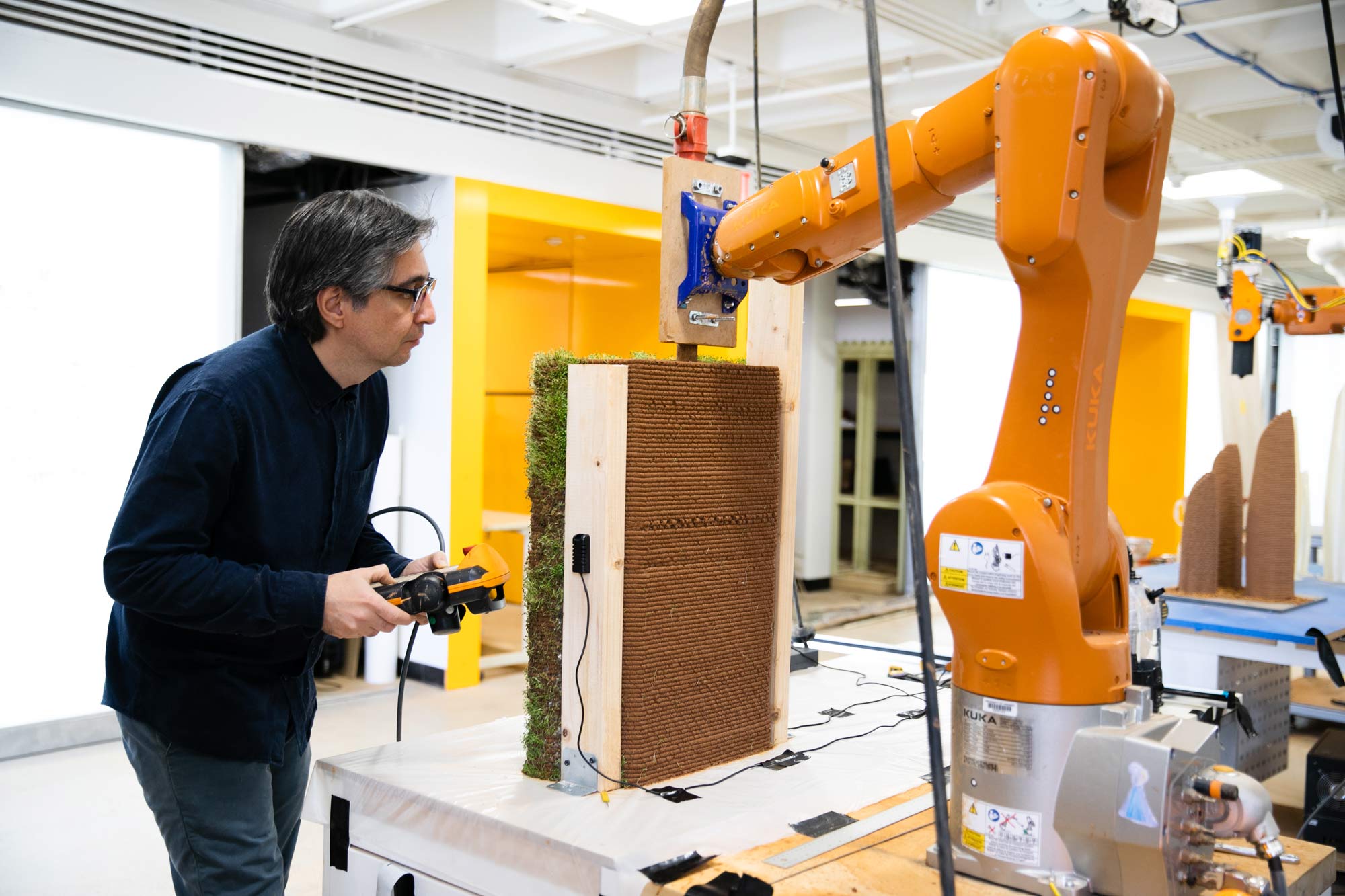
Someday, maybe sooner than later, people building homes and offices may be able to 3D-print their roofs and walls using soil implanted with seeds - think oversized Chia Pets - thanks to new sustainability research at the University of Virginia.
You've probably seen buildings with rooftop gardens and terraces that support trees and grasses. It's cumbersome for architects and builders to graft soil and plants onto steel and cement, although the environmental payoffs can be big. Gardens are natural insulators, soak up rain and provide green spaces for people, animals and pollinators.
Ji Ma, an assistant professor of materials science and engineering at UVA's School of Engineering and Applied Science, wondered: "Why do we have to make it so that the structure or building is separate from the nature it sits in?"
To answer this question, Ma forged a partnership with David Carr, a research professor in UVA's Department of Environmental Sciences, and Ehsan Baharlou, an assistant professor in UVA's School of Architecture. He also enlisted one of his students, Spencer Barnes, who joined Ma's research group as a first-year undergraduate and earned his Bachelor of Science in aerospace engineering in May.
Together, they have proven that 3D-printing geometrically complex structures made of soil and seed is doable - introducing a key innovation in bio-based construction.
3D printing, sometimes called additive manufacturing, is an emerging market in architectural design and building construction, driven by community interest in green buildings and a need for affordable housing.

There are construction projects, including one in Virginia, using 3D printing technology to create homes and even neighborhoods in underserved regions. The UVA research team is taking 3D printing one step further, to combine additive manufacturing's speed, cost efficiency and low energy demands with locally resourced, bio-based materials.
This design philosophy and approach aligns with a sustainable development practice called "the circular economy." Essentially it means construction materials come from the Earth and can be recycled. Typical construction is more linear, meaning the raw materials like lumber are created from the Earth, are used in construction, and then thrown away as waste when no longer needed.
"We moved to soil-based 'inks' to derive additional benefits from circular additive manufacturing," Baharlou said. "We are working with local soils and plants mixed with water; the only electricity we need is to move the material and run a pump during printing. If we don't need a printed piece, or if it isn't the right quality, we can recycle and reuse the material in the next batch of inks."
Circular bio-based construction relies on more efficient use of raw materials in construction, in turn helping to reduce carbon emissions during the life cycle of a building. Not only are most components and materials used in the construction industry not adaptable, reusable or recycled during or after their lifecycle, they are often not locally sourced. Breaking away from the current linear approach to designing and constructing buildings to a circular one requires research and prototyping across architecture, engineering and construction.
That's where Barnes entered the picture.
"They paid me to play with dirt," Barnes said.
"Professor Ma has a very sophisticated additive manufacturing lab, working mostly with laser printing with metal powders. The printers are high-end, very precise and shiny," Barnes added. "Then there's me at the corner table mixing up some soil concoction."
Barnes conducted experiments with soil-based inks, supported by a University of Virginia Harrison Grant. Using a desk-sized 3D printer, he explored two approaches: printing soil and seed in sequential layers and mixing seed and soil before printing. Both approaches worked. Barnes produced a cylindrical prototype, about the size of soda can, which looked a bit like a Chia Pet, the 1980s sensation that had buyers spreading a paste of chia seeds on grooved terracotta animal-shaped figures.
Baharlou then proposed 3D printing soil structures with more complex geometries, such as domes.
The research team - including Leah Kirssin, who earned a Bachelor of Science in Architecture in 2021, and Lizzie Needham, who graduated with a Master of Landscape Architecture in the same year - tested how material comes out of the printer head or nozzle without any additives to the soil mixture. These collective efforts revealed that 3D-printed soil structures can support plant growth, but would likely be limited to plants that can survive with little water.
"3D-printed soil tends to lose water more quickly and keeps a stronger grip on the water it has," Ma said. "Because 3D printing makes the environment around the plant drier, we have to incorporate plants that like drier climates. The reason we think this is the case is because the soil gets compacted. When the soil is squeezed through the nozzle, air bubbles are pushed out. When the soil loses air bubbles, it holds onto water more tightly."
When a plant wants water, it has to fight the soil for it, exerting some pressure to lure the water from the soil and into the roots. At the same time, the soil exerts pressure of its own to retain water. Whether the plant or the soil wins this tug-of-war depends on the type of soil, the variety of plant and the plant's maturity.

To find the right mix of soil and seed, Ma reached out to Carr, who serves as director of Blandy Experimental Farm, an environmental science field station in Clarke County.
"Some of my students have used 3D printing to make devices to collect pollen off of bees as they enter their hives, but I never imagined that you could potentially print something that was biologically alive," Carr said.
He proposed plants that naturally occur in areas where life is at its limits - native plants that grow practically right on bare rock. "Green roofs tend toward these species that are good at living under these really harsh conditions, getting baked in the sun," Carr said. "From this research, we can learn a lot about what works for green roofs to help with rainwater, cooling and providing a habitat for pollinators and other insects."
Carr recommended stonecrop, commonly used in green roof settings. Stonecrop's physiology is similar to the cactus. It can survive on very little water, dry out and desiccate to some degree, and then recover.
The team published its results, "3D printing of Ecologically Active Soil Structures," in the journal Additive Manufacturing earlier this year. Barnes, who was the lead author on the team's paper, will continue to help solve big problems with big impacts as a graduate student in mechanical engineering at Stanford University, where he plans to focus on hypersonic flight and propulsion research.
"I greatly enjoyed working with Dr. Ma and the rest of the team," Barnes said. "The combination of experts from different disciplines culminated in a unique project with big potential impact. I hope to continue working with similar interdisciplinary teams as I head to graduate school."

Ma and Baharlou previously partnered with Osman Ozbulut, an associate professor of civil engineering and principal investigator on a 3Cavaliers grant, to develop a 3D printing technique for cement-based architectural structures.
Supported by the School of Architecture's fabrication lab, or FabLab, Baharlou used this 3Cavaliers grant to establish an additive manufacturing fabrication system to 3D-print large structures. The centerpiece of the fabrication system is an industrial robot with a 3- to 4-foot reach that can squirt out materials to match an architect's objectives.
More recently, Ma and Baharlou earned a 3Cavaliers grant with Tomonari Furukawa, UVA professor of mechanical and aerospace engineering, to pursue research in ecological construction.
"The team at the Office of the Vice President for Research has been instrumental in spurring collaboration between architects and engineers," Baharlou said. "Our cross-discipline integration is helpful for society and humanity by advancing the applications of bio-based materials."
"Regardless of the material - plastic, metal, clay, soil or plant life - in the end it's a materials problem," Ma said. "The additive manufacturing process creates uncertainties and opportunities within the material system you're working with that's different from conventional systems. You can approach this in different ways. You can try to avoid it and be afraid of it. Or you can try to control it and take advantage. That's the long-term goal of our research program."






